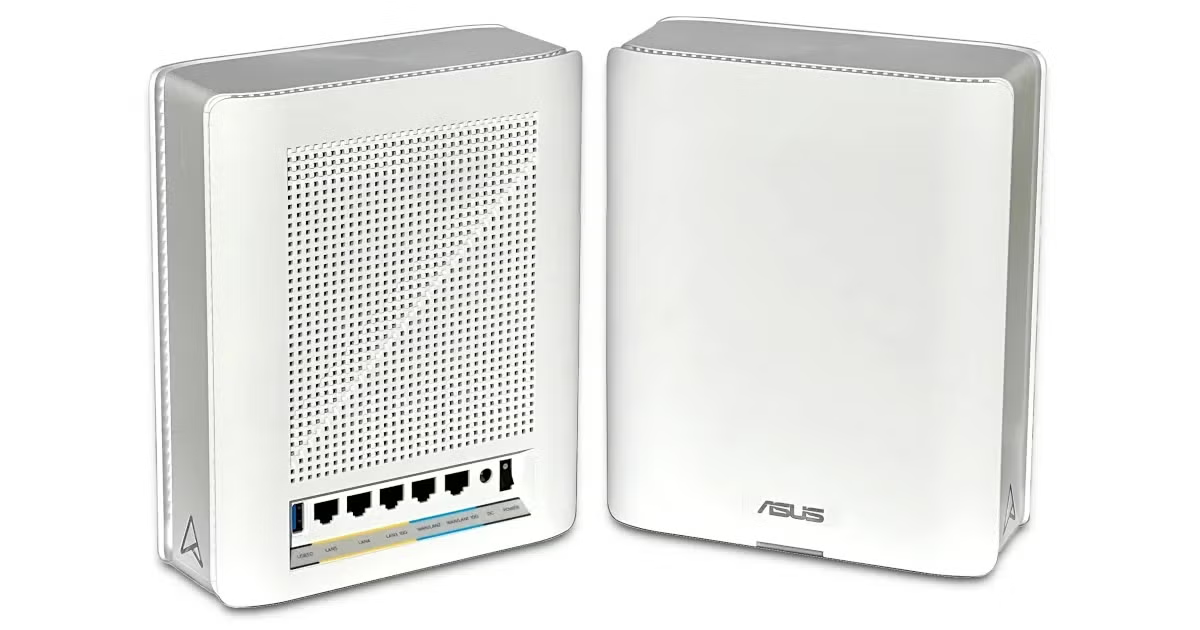5 Ways To Get Wi-Fi in Your Car
Get internet on the go for all vehicles
Aug 26, 2025 | Share
Equipment Guides, FAQ, How-To
Staying connected to the internet on long drives and road trips has never been easier. There’s plenty of car Wi-Fi and portable internet options available to make sure you and your passengers stay online and entertained. But staying connected is not all fun and games—it gives you access to live traffic updates, satellite radio, weather forecast, and emergency services while on the road.
There are five main ways to get Wi-Fi in your car:
- Use a portable internet device and connection
- Use your phone’s hotspot
- Use a mobile hotspot device
- Use your car’s built-in Wi-Fi system
- Use a public Wi-Fi hotspot
There are plenty of options to stay connected, and we’ll help you find the best solution for your needs and budget.
Pro tip:
If you anticipate there will be plenty of rest stops during your long drive, you can use public Wi-Fi hotspots in the parking lot of a restaurant, school, or library.
On this page:
Portable internet services | Your phone’s hotspot | Mobile hotspots | In-car Wi-Fi systems | Public Wi-Fi | FAQ
On this page:
1. Use a portable internet service
There are many solid options for portable internet service that you can use in or out of a car. Portable internet can be especially useful if you plan to travel to a remote location with unreliable or even no internet service.
Portable internet uses dedicated equipment designed to move with you and an internet plan that will give you plenty of speed and data on the go. Compared to a hotspot, portable internet services allow you to connect more devices at once, provide lower latency, and can even give you access to service in areas where traditional broadband isn’t available—if you go with a satellite service provider like Starlink.
While getting portable internet is the most reliable option, it can come at a higher cost. You’ll have to purchase equipment up front if you go with a Starlink plan. On the other hand, T-Mobile provides the equipment for AWAY™ plans.
T-Mobile charges a $10 monthly fee to pause its AWAY plans, while Starlink offers more flexibility and lets you pause and unpause your plan as needed.
Portable internet plans
| Plan | Price | Speed | Equipment cost |
|---|---|---|---|
| Roam 50GB | $50/mo.* | Up to 300Mbps | $499 |
| Roam Unlimited | $165/mo.† | Up to 300Mbps | $499 |
| AWAY™200 GB | $110/mo.‡ w/ AutoPay | 133–415Mbps | $0, but up to $370 charge if device isn’t returned |
| AWAY™Unlimited | $160/mo.‡ w/ AutoPay | 133–415Mbps | $0, but up to $370 charge if device isn’t returned |
Data as of 08/26/2025. Offers and availability may vary by location and are subject to change. See disclaimers.
2. Use your phone’s hotspot
Your cell phone’s hotspot is the easiest—and cheapest—way to get internet in your car. Just be sure to keep an eye on your hotspot data usage limit.
Most cell phones have built-in hotspots, which you can connect to using data from your phone plan. They’re really easy to use and give you decent speeds as long as you’re in an area with cell service. Just make sure you have hotspot access as part of your phone plan.
Best phone plans with hotspot data
| Plan | Price | Monthly hotspot data |
|---|---|---|
| AT&T Unlimited Premium | $85.99/mo.* for 1 line | 60GB |
| T-Mobile Experience Beyond | $100/mo.† for 1 line | 50GB |
| Verizon Unlimited Ultimate | $90/mo.‡ for 1 line | 60GB |
Data as of 8/04/25. Offers and availability may vary by location and are subject to change.
See disclaimers.
Phone hotspot data is included on most unlimited phone plans from major providers like AT&T, Verizon, and T-Mobile. You can pay for a cheaper plan if you use your hotspot less frequently and need less data.
To use your phone as a hotspot, contact your provider, sign up for the right data plan, and then switch on your phone’s hotspot to get it working. After you’ve turned on your hotspot, you can search for the network name on other devices that you want to connect to the internet.
Pro tip:
Don’t know how to turn on your phone’s hotspot? Check out our phone hotspot guide.
3. Use a mobile hotspot
If you don’t want to get a new phone plan just for hotspot data, you can use a standalone mobile hotspot device for more long-term use. A standalone mobile hotspot is similar to a phone’s hotspot, but gives you the ability to connect more devices at once and a faster connection without draining your phone’s battery.
You can get a plan with a mobile hotspot device that offers more hotspot data than your phone’s hotspot monthly data cap. You can get anywhere from 2GB to 150GB of high-speed data with a price that can range from as low as $10 to $90, giving you more flexibility to decide on a plan based on your needs.
Pro tip:
You’ll need a data plan to make your hotspot device work. Take a look at the best hotspot data plans to learn about pricing and data caps.
Best mobile hotspots
| Product | Price | Battery life |
|---|---|---|
| Inseego MiFi M2100 5G UW | $299.99* | Up to 24 hrs. |
| NETGEAR Nighthawk M1 | $150.00* | Up to 13 hrs. |
| T-Mobile Inseego MiFi X PRO 5G | $264.00* | Up to 13 hrs. |
Data as of 08/04/2025. Offers and availability may vary by location and are subject to change.
*Amazon.com Price as of 08/04/2025. See disclaimers.
4. Use your car’s Wi-Fi system
Many cars have built-in hotspots included as part of their navigation and entertainment systems. You have to pay extra, but if it’s available to you, it can be an affordable option. We recommend checking with your car manufacturer to see if they offer Wi-Fi or a hotspot.
Some car manufacturers like Ford, Toyota, and Volkswagen offer services to get your car connected to the internet. We’ll narrow our list down to the best providers that offer services for various car brands—but be sure to always confirm compatibility before making your purchase.
Best Wi-Fi systems for your car
| Wi-Fi system | Price | Data |
|---|---|---|
| OnStar One | $34.99/mo. | Unlimited data plans available |
| Verizon In-Vehicle Wi-Fi | $75.00/mo.* for 1 line | 15GB of premium data, then unlimited data speeds reduced |
| T-Mobile Magenta Drive | $20.00/mo.† for 1 line | 50GB |
Data as of 08/04/2025. Offers and availability may vary by location and are subject to change. See disclaimers.
5. Free public Wi-Fi and hotspots
If your pit stops are near a cafe, restaurant, or library, you may be able to access free Wi-Fi. It’s not the safest or most reliable way to get internet access, but it will do the trick in a pinch.
If you are on a budget and looking for ways to get free or cheap Wi-Fi out on the road, check out our handy guides on how to get Wi-Fi while you travel and how to find free public Wi-Fi.
Some internet providers, like Spectrum and Xfinity, offer public hotspots for their customers. Before getting on the road, check with your internet provider to see if they offer any hotspot or portable internet options.
Not sure where to find free public Wi-Fi? You can start with any of the options listed below.
Popular restaurant chains with free Wi-Fi:
Other places you can find Wi-Fi:
FAQ about car Wi-Fi
Can you get unlimited car Wi-Fi?
Which cars have built-in Wi-Fi hotspots?
Does Tesla have Wi-Fi hotspots?
Disclaimers
Amazon disclaimer
Product prices and availability are accurate as of the date/time indicated and are subject to change. Any price and availability information displayed on Amazon.com at the time of purchase will apply to the purchase of this product. HighSpeedInternet.com utilizes paid Amazon links.
CERTAIN CONTENT THAT APPEARS ON THIS SITE COMES FROM AMAZON. THIS CONTENT IS PROVIDED ‘AS IS’ AND IS SUBJECT TO CHANGE OR REMOVAL AT ANY TIME.
Portable internet plans
* Users on Mini Roam are limited to 50GB of Mobile Data and can use in-motion beyond 100mph
† Plus hardware, shipping & handling fees, and tax. Fully refundable. Depending on location, some orders may take 2 weeks or more to fulfill.
‡ with AutoPay, taxes and fees included.
Best phone plans with hotspot data
* 5G coverage not available everywhere. Requires compatible device/service. Other terms and restr’s apply. Data charges may apply.
† for 1 phone line + taxes and fees. AutoPay discount using an eligible payment method applied.
‡ With paper-free billing and Auto Pay. Plus taxes & fees.
Best mobile hotspot devices
* Product prices and availability are accurate as of the date/time indicated and are subject to change. Any price and availability information displayed on Amazon.com at the time of purchase will apply to the purchase of this product. HighSpeedInternet.com utilizes paid Amazon links.
CERTAIN CONTENT THAT APPEARS ON THIS SITE COMES FROM AMAZON. THIS CONTENT IS PROVIDED ‘AS IS’ AND IS SUBJECT TO CHANGE OR REMOVAL AT ANY TIME.
Best Wi-Fi systems for your car
* with paper-free billing and Auto Pay, $80 without. Auto Pay and paper-free billing required to get the discount. You can get Auto Pay by signing up online or on the phone with your checking account, debit card, or Verizon Visa Card. Your discount will be applied each month as long as Auto Pay and paper-free billing are active. All subsequent lines are $20.
† Plus taxes and fees w/AutoPay discount using eligible payment method. Compatible vehicle & devices required. Max eight simultaneous connections. During congestion, heavy data users (>50GB/mo. for most plans) and customers choosing lower-prioritized plans may notice lower speeds than other customers. Video typically streams on smartphone/tablet in SD quality.
Author - Andrea GutierrezPrieto
After graduating from the University of Utah with an honors degree in Linguistics, Andrea Gutierrez Prieto transitioned from being an Analytic Linguist and Research Assistant to the HighSpeedInternet.com team. Andrea has a background in academic and research writing with a passion for helping readers make informed decisions. Off the clock, Andrea spends her time watching anime, reading manga, and baking delicious pastries at home.
Editor - Jessica Brooksby
Jessica loves bringing her passion for the written word and her love of tech into one space at HighSpeedInternet.com. She works with the team’s writers to revise strong, user-focused content so every reader can find the tech that works for them. Jessica has a bachelor’s degree in English from Utah Valley University and seven years of creative and editorial experience. Outside of work, she spends her time gaming, reading, painting, and buying an excessive amount of Legend of Zelda merchandise.




